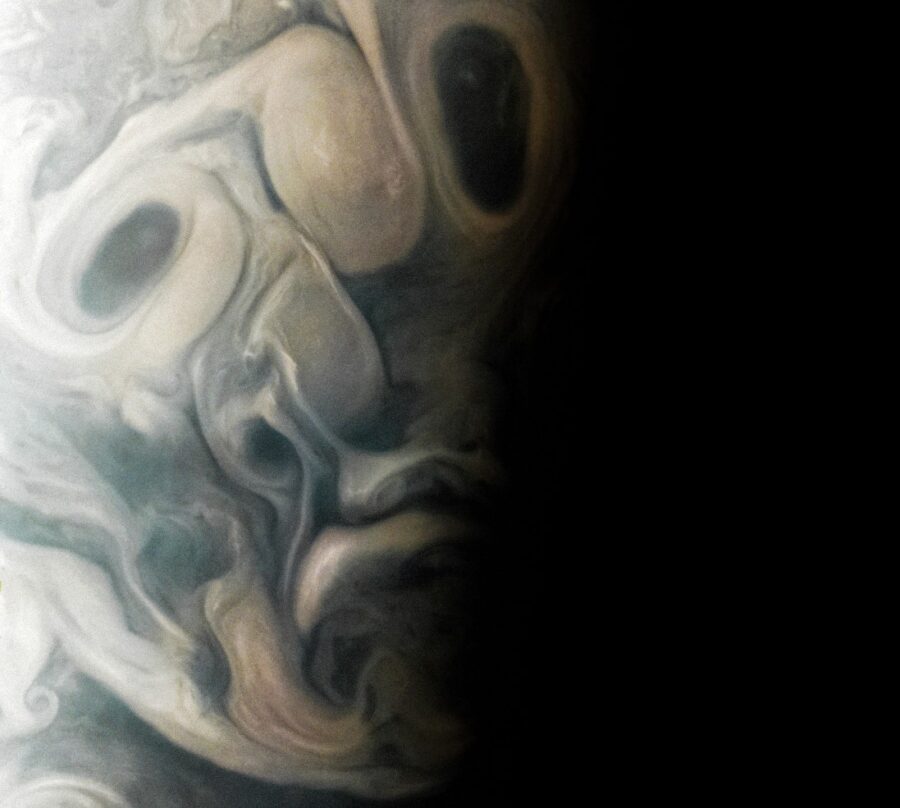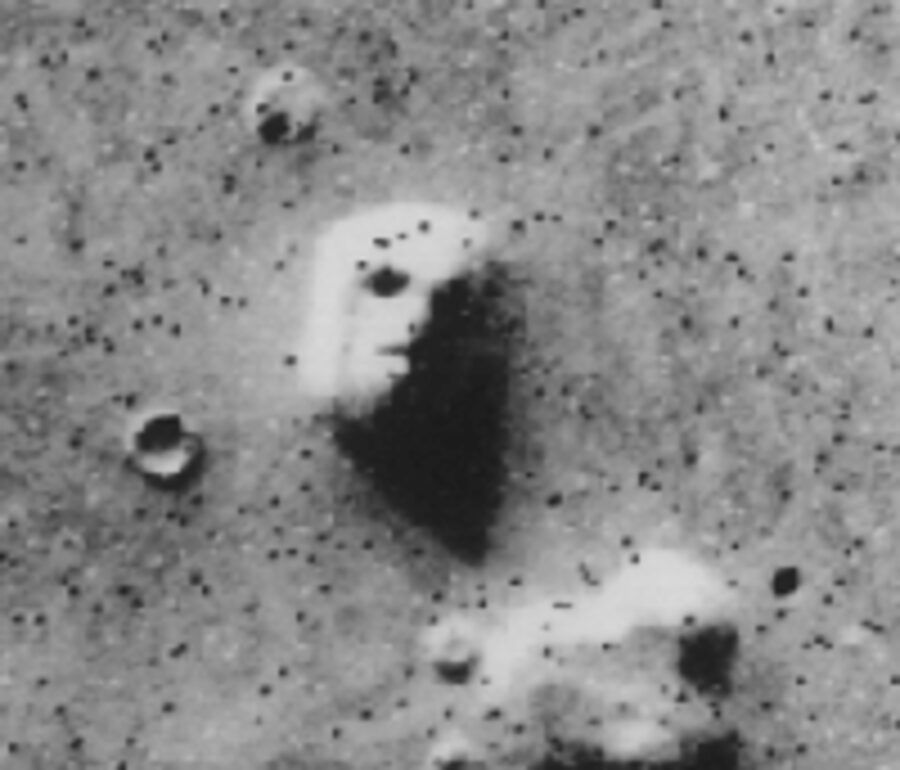NASA Captures Ghoulish Face Found On Jupiter, See The Creepy Photo
Have you ever looked up at the sky, and thought that the cloud above you looked just like a car, or a hamburger, or a skateboard? Well, NASA recently released some pictures of Jupiter, and the same thing happens there. NASA’s close flyby of Jupiter during their most recent Juno mission captured images from above the planet, and the swirling clouds are in the shape of a creepy looking melted face.
An image recently taken of Jupiter reveals a group of swirling clouds that look a lot like a face.

Looking at random objects and perceiving an image that’s not necessarily there is a phenomenon known as pareidolia. But while most cloud-gazing requires you to use a little bit of imagination, you’re really not going to have to reach far to see the face on Jupiter.
The image that we’re seeing is the result of raw data from the JunoCam instrument being compiled by citizen scientist Vladimir Tarasov, and the raw images were snapped around 4,800 miles above the gas giant’s clouds.
The face in question was discovered on September 7, and is the result of clouds and storms along the dividing line between night and day on Jupiter known as the terminator. As for the imagery, Jupiter’s clouds bear a striking resemblance to Edvard Munch’s iconic painting that we simply know as The Scream.
If you’re an aspiring astronomer, or simply love the art of editing photos, you can submit your work to be featured on the site just like Vladimir Tarasov did with the face we’re witnessing.
Just like the painting, the face looks sad, concerned, and possibly panicked. Though we wouldn’t be this kind of connection if Munch’s paintings were never produced, we’d still be hard-pressed to say that the image looks like anything other than a a concerned human face.
This isn’t the first example of pareidolia by a long shot, however, as we are visual creatures who like to relate larger-than-life concepts to objects that we’re more familiar with. Though NASA’s images are part of an effort to grasp a better understanding of Jupiter’s complex topography, we can’t help ourselves when the opportunity to use our imagination presents itself. Other well-known examples of pareidolia include the man in the moon, and the face on Mars.

If you’re something of a citizen scientist yourself, you’ll be glad to know that you can access recent raw Jupiter images from the JunoCam website, and process them into your own visual masterpieces.
If you’re an aspiring astronomer, or simply love the art of editing photos, you can submit your work to be featured on the site just like Vladimir Tarasov did with the face we’re witnessing. Swirling clouds and storms on the fifth planet from the sun are a perfect source of inspiration if you want to do some celestial cloud-gazing from the comfort of your office.
Looking at random objects and perceiving an image that’s not necessarily there is a phenomenon known as pareidolia.
The best part about NASA’s Juno mission and its image processing gallery is that you get credit for uploading your photos if they end up being published in a scientific journal. For all we know, there’s plenty more faces in the clouds where this magnificent image came from.
Today we’re seeing a face on Jupiter, but as more raw material makes its way to the site, there may be other images to consider. Or if you just want to look at some supremely detailed pictures of Jupiter for the fun of it, there are plenty of featured photos from the public that are uploaded to the site regularly.











